Is the Gettysburg battlefield really haunted? Tony Barrell joins an army of ghost hunters at Pennsylvania’s spookiest Civil War site
THE SUNDAY TIMES, 1999
When it was all over, hundreds of soldiers and civilians spent an awful long time just gazing over the fields and hills around Gettysburg. General Robert E Lee’s Confederates had lost the three-day battle, but there were huge losses on the Union side too. Piled across this normally idyllic part of Pennsylvania were 7,000 dead men. Many had been blasted with minie balls – bone-splintering lead bullets – or by cannons firing balls, shells or canisters – metal cans full of one-inch shot. Others had been stabbed by swords or bayonets. A further 3,000 would eventually die of their wounds. “Such a sight,” wrote a witness from New Hampshire to her parents, “I never want to see again.” Burying the bodies was a mammoth task; this being Union territory, the boys in blue were put into the ground first, and thousands of Confederates were left to rot in the muggy summer weather. Flies swarmed. The stench from the blackened, bloated corpses became overpowering.
Ghostly Yankees and Rebels may still be slugging it out, doomed to re-enact the carnage for an eternity
But there is something even more horrifying to contemplate. It is the idea that the Battle of Gettysburg, the deadliest single conflict of the American Civil War, may not have ended on July 3, 1863. Somewhere, in some weird spectral dimension that somehow occupies the same space as this pretty little town and its surrounding fields and orchards today, ghostly Yankees and Rebels may still be slugging it out; may be doomed to re-enact the carnage and suffering for an eternity.
This is not a macabre joke. It is what many Americans truly believe. I am sitting with two of them on the battlefield where it all happened 136 years ago. We are sitting on chairs at a table indoors, for this is now the restaurant of a Holiday Inn.
“When some people die,” explains Dave Oester, “for one reason or another they don’t know they’re dead, or they have unfinished business, unresolved issues. Their negative emotion, their hatred, stays with them when they die and prevents them from moving on. Imagine an air balloon: those negative emotions are tying down the ropes and anchoring them to the Earth.”
“A lot of the soldiers who died here don’t know they’re dead, because they died so suddenly,” says Sharon Gill. “And they still see each other.”
“Yes,” says Oester, “especially if they died as a group. They walk along in formation, a canister explodes above them and kills 20 of them at one time. Then, all of a sudden, all 20 get back up, get their rifles and keep on going, because of the emotional intensity of fighting to protect their families and their way of life.”
Can they see us? “Well,” says Oester, “to them, we might be just funny-looking civilians on the battlefield.”
“There’s a very thin line between this dimension and the next,” adds Gill.
Oester, 51, and Gill, 50, are the founders of the International Ghost Hunters Society (IGHS), a somewhat amorphous body dedicated to the “investigation of ghostly phenomena recorded through digital, film and video photography”. A married couple from Oregon, they are devoting their working lives to pushing back the frontiers of spook research, maintaining a hugely popular website, Ghostweb, packed with photographs of eerie blobs of light, “ectoplasmic” mists and apparitions, and organising conferences and mass ghost hunts at some of America’s most haunted locations.
There are tales of headless horsemen, statues coming to life, inexplicable cries, neighs and bugle calls in the night
This is the second annual conference the society has held at Gettysburg. It is, after all, prime hunting ground, a spiritual home-from-home for the paranormalist. You can’t spend half a day with the residents and tourists in this town without hearing a ghost story or three. There are the classic tales of headless horsemen, uniformed wraiths on crutches, statues coming to life, inexplicable cries, neighs, cannon fire and bugle calls in the night. People smell gunpowder, 19th-century pipe tobacco, rotting flesh. Every local building worth its salt played a part in the battle: its attic was commandeered by Rebel sharpshooters, its basement harboured wounded Union officers, or the whole place became an emergency hospital. Bullet holes are displayed as trophies; resident ghosts are described with some pride.
The town itself is something of a ghost. With nearly 6,000 acres of surrounding battleground conserved as a national park, it is hemmed in by its history. As the local author Mark Nesbitt has written, “growth is and must be controlled more carefully than [in] other small towns since there is so much hallowed ground in and around Gettysburg, sanctified by the blood and suffering of patriots from both sides”. There is nowhere here to build industrial parks or high-rise estates, and the lucrative tourist trade has brought a lot of museumification. Much of the town looks like a Norman Rockwell illustration of a Gone with the Wind film set. Quaint, sharp-gabled clapboard houses, with rocking chairs on their porches, face each other across broad streets lined with telegraph poles and mature sycamores and cypresses. If you want some action here, you go to the National Civil War Wax Museum, or check out the “battlerama” of 25,000 hand-painted miniature soldiers at the Gettysburg Battle Theatre.
It helps the spookiness of the place that the key regions of the battlefield have these catchy, mythic names: the Peach Orchard, Spangler’s Spring, Devil’s Den. The last of these is no less than a place of pilgrimage for ghost hunters. A maze of colossal granite boulders and caves a couple of miles south of the town, it saw some of the nastiest fighting on the battle’s second day. To add insult to injury, a photographer who came here to record the aftermath in 1863 took the liberty of moving a Confederate corpse around and posing him. A legend now has it that cameras and camcorders often go completely potty here.
Then there are Iverson’s Pits, just northwest of the town. This is where, on the afternoon of the first day, Brigadier General Alfred Iverson of the Confederates told his brigade of around 1,400 North Carolinians to advance. Hundreds were killed by Union troops who popped up from behind a stone wall; they were still in formation when they fell, and were later buried in shallow trenches on the same spot. Ever since, there have been tales of drifting mists and swooping black shadows, despite the fact that the bodies were exhumed and returned to the South in the 1870s.
Dave Oester now sets up his camcorder and a little portable screen on the restaurant table. Last night, he says, he and Sharon Gill went to Iverson’s Pits and he set the machine up on a tripod, with a light on top shining at the woods. He filmed for over 50 minutes, and didn’t think he’d captured anything until he played the final two minutes. He starts the tape, and we watch a pair of bright round lights whizz past some trees, from right to left. “Now you may say, ‘Oh, it’s a car, it’s the headlights of a car.’ But when you analyse the 62 frames that they’re visible in, you’ll see that they’re not always the same distance apart. And they appear in front of the trees. And it’s 30ft from the road.”
Orbs are ghosts in motion. Spirit orbs have a unique composition and texture within them
To me, the funny lights look like a couple of jokers mucking around with flashlights. But no, says Dave: they are “spirit orbs” – souls of the dead who have adopted a spherical shape. “Orbs are ghosts in motion, meaning that the spirit is moving about.” The IGHS website is loaded with photographs of them – shots of cemeteries with round things flying here, there and everywhere, as if someone is forever blowing glowing bubbles. And there is to be no escape from that three-letter word – orb – for the rest of the conference.
But how can they be sure that a bright round thing captured in a photograph isn’t, say, a water droplet or speck of dust on the lens? “When you’ve looked at 15,000 to 20,000 photographs,” says Oester, “you develop a certain type of discrimination. Spirit orbs have a unique composition and texture within them. A raindrop, snowflake, moisture droplet or dust particle will not have that. And on many occasions, water drops will not be sphere-shaped: they’ll be lopsided.” Every now and then, he emphasises a point by grinning toothily through his grey beard, as if the Milky Bar Kid has grown up to become Santa Claus.
Mindful of the 3,000 or so dead horses supposedly still carrying the spectral cavalry into battle, I ask whether animals come back as orbs as well. “The human orbs are larger, with a circular pattern within them. The animal spirits are smaller, like golf balls, and don’t show any texture.” Surely horses would be bigger? “What we tell people is, if the animal has a personality and has intelligence, then their orbs show that.”
That afternoon, other IGHS members start arriving at the hotel. They congregate in the lobby, ordinary Americans in their thirties and forties, chattering and comparing their latest spirit photographs as blithely as if they were holiday snaps. “Hi! We’re the Simpsons!” announce one couple cartoonishly as they emerge from the lift. “These are my babies,” says Nancy Simpson as she shows me some pictures of round blobs floating in the cemetery next to her house in Connecticut. Don’t take her literally: she is simply expressing her affection for photographing the things. She produces some other shots that show orbs zooming around inside her home. A theme starts to emerge: many of these people live in houses they believe to be haunted. Although members say that photographing ghosts is simply “a hobby”, the IGHS clearly acts as a support group, helping them to cope with their fear of the unknown.
At his home in Delaware, 32-year-old US Air Force historian Tom Lauria has seen a column of light going down the stairs. “As it hit each step, you could hear it creak. It scared me to death. Do you ever watch Star Trek? You know when they transport? That’s what it looked like – I was waiting for Captain Picard to appear on the steps.” There is also a “ghost cat” that jumps in bed with Tom’s wife, Jennifer, and periodically uses their real cat’s litter box. Does it produce any ghost mess? “No ghost mess, no – just noises.”
Each member is frightened or fascinated enough to have paid $75 to attend this one-and-a-half-day event. By tomorrow, Saturday, there will be around 150 of them, netting the IGHS more than $11,000. “These conferences are for us to make money,” admits Oester. “And we sell T-shirts and hats and videos as well. But we don’t charge for private investigations, and we don’t charge people who need help.”
At 7pm, a bunch of members troop off down the darkening street to begin the ghost hunt. They are ghost hunters rather than Ghostbusters: you can tell because they are wearing jeans, T-shirts, casual jackets and baseball caps rather than the dark grey jumpsuits that Bill Murray and Dan Aykroyd wore in the film. They carry cameras and camcorders instead of proton guns firing streams of quantum energy. But there the big differences end. Many IGHS members pack an electromagnetic-field (EMF) detector, reminiscent of the Ghostbusters’ psychokinetic (PKE) meter, for locating anomalous energies ($99 from the IGHS). And some wear “night vision” contraptions on their heads that are dead ringers for the “ecto goggles” in the movie.
If the scanner shows a massive temperature drop, they say they’ve found a ‘cold spot’ indicating a ghost
Another de rigueur piece of kit is an infrared thermal scanner, a kind of high-tech thermometer ($265 from the IGHS). The ghost hunters swing this round as they walk, keeping an eye on the digital temperature reading; if it shows a massive drop, they say they’ve found a “cold spot” indicating the presence of a ghost, and they point their cameras at it. “I’ve found 48-degree differences,” says Rick Fisher, 44-year-old director of the Pennsylvania Ghost Hunters Society. From a distance, the temperature indicator resembles a gun. “I’ve noticed cops looking at me when I’ve carried it through the streets of Gettysburg,” says Fisher.
Tonight we are visiting some of the town’s haunted houses. First up are the premises of Mark Nesbitt, where doors are supposed to slam by themselves, invisible marbles roll across the floor and ghosts give people piggybacks. Nesbitt himself, a Civil War historian who has written four slim but successful volumes about Gettysburg hauntings, takes us round, telling creepy stories and advising on the best spots for photography. “Rick Fisher has had some luck on the stairs,” he notes, but I wonder if that is any of our business.
Around 30 people troop through Nesbitt’s kitchen, office, attic, and finally basement, swinging their temperature indicators menacingly like Bodie and Doyle of The Professionals. Many have digital cameras, so they can view the photographs on their little integral screens soon after taking them. If they spot the tiniest orb, nestling by a skirting board or browsing by a bookcase, they nudge colleagues and show them. Up in the attic, one hunter complains that ghosts have sucked all the power out of his batteries. Spirits need the energy, he says – when they produce cold spots, it’s because they have taken the heat from the air – and they also have a sense of humour. “They love to play tricks on you,” Oester explains. “They’re trying to spook you, and they get a good laugh out of it.”
That night we ghostbust two other houses, but apart from the odd orb photograph and the occasional misbehaviour of equipment, the results are meagre. One young female ghost hunter seems to speak for everyone when, emerging from yet another dark basement, she whinges: “I’m tired of orbs. I want to see an apparition.”
***************************************************
President Abraham Lincoln is inescapable here. When he came to Gettysburg four months after the battle to dedicate the town’s new national cemetery, he delivered one of the most famous speeches on the planet. In modern-day Gettysburg, you can watch an animated Lincoln puppet go through the whole “government of the people, by the people, for the people” shtick all over again. You can eat at the Lincoln Diner on Lincoln Square. You can buy wood from Lincoln Logs and, if you really wish, live in Lincoln Estates Mobile Home Park. Set in the ground on Baltimore Street is one of the most pathetic signs I have ever seen. It reads: “President Lincoln passed by this tree on November 19, 1863.”
When I walk into a shop called Abe’s Antiques, I see my first apparition. “Wo!” I say.
We have the weirdest fog here. There are numerous little streams, and the fog hangs in little pockets above them
“Wo!” says the ghost, alarmed by my astonishment. It is President Lincoln, with that familiar moustacheless beard and proud bearing. Then I realise it couldn’t possibly be Lincoln, because he is meant to haunt his home town of Springfield, Illinois, 660 miles away. This is William Ciampa, 39, who came to Gettysburg from New Jersey four years ago to open this shop, which sells all manner of junk as well as Lincolnalia. Now and then he gives people a fright by wandering over the battlefield. Here was a rare chance to ask the 16th president of the USA whether he thought Gettysburg was haunted. “I think all the ghost stories can be explained using scientific fact,” he says. “We have the weirdest fog here that I’ve seen in any place on Earth. There are numerous little streams, and the fog hangs in little pockets above them. People see apparitions in it, but I think it’s just fog. Because we’re in a valley, we don’t get that air current that blows the fog off. You can be driving here on a really nice, sunny morning, and suddenly you can’t see 10ft in front of you.”
Sitting in Fields of Glory, his spartan, museum-like shop of Civil War memorabilia, 41-year-old Van Nitz is even more dismissive. “I’ve slept on the battlefield many nights,” he booms, “since I was a kid of 12 or 13 – Devil’s Den, the whole deal – and I’ve never seen a ghost. And I know more about what happened on this battlefield than 99.9% of the people out there. I’ve been studying it all my life. I can go out there and become very emotional, knowing that I’m standing in a spot where a guy caught a minie ball, and knowing the guy’s name and his wife’s name. But ghosts? No. I’d rather see people coming here looking for the historical aspect of the battle than waste their time out there with Ouija boards and dead chickens or whatever.”
To be fair, Ouija boards, let alone dead chickens, are really not Dave Oester’s style. His regular newsletters to IGHS members are peppered with stern warnings against using them: “The IGHS does not endorse Ouija boards and therefore one should not be used before, during or after an investigation by members… Ouija boards and seances… can result in terrible consequences. Unwanted doors may be opened and unwanted spirits invited through… Fire and gasoline do not mix nor do Ouija boards and positive spiritual contacts, nor scientific research. Avoid them.”
After the seance I try to leave the room, but the door initially refuses to open. There is a piece of string tied to the handle
Guess what. Late one night, I’m invited to a seance in one of the hotel rooms on the third floor. Two naughty ghost hunters, a female psychic and a male friend, sit touching a white, heart-shaped planchette, which slides around the Ouija board as they appeal for Union or Confederate souls to talk to us. The woman says things like: “Did you die in the battle? Oh, I’m sorry. How did you die? Were you shot?” To my horror, she invites ghosts to “give us a sign” if they’re here – like knocking on the board. Fortunately, they don’t comply. We apparently hear from a young black child who died of bubonic plague, from the psychic woman’s own mother, and from at least one soldier who can’t spell his name. “No!” the woman berates him, worryingly. “You’re not making sense. Start over!” After she asks one soldier how he died, she says she feels something on her stomach. Lifting her top, she finds a little red line on her skin, which looks like a mark from her belt buckle. “You were stabbed,” she concludes. After the seance I try to leave the room, but the door initially refuses to open. It turns out that there is a piece of string tied to the handle on the other side of the door, and the other end is knotted to the railing of a balcony outside. I have no evidence that this was a human prank.
***************************************************
The Saturday of the conference is dominated by talk. Mark Nesbitt and a series of other ghost writers stand at the lectern in the Holiday Inn’s function room, tell stories and plug their own and each other’s books. Some of the audience are restless, furtively passing round digital cameras to show off last night’s orb shots, like naughty boys in class. They are itching for nightfall, when they can get onto the battlefield and find some ectoplasm, maybe even an apparition.
In the afternoon, three women with Appalachian mountain dulcimers go trekking across the landscape. Alice Whitehill, her teenage daughter Rachel, and Rachel’s friend Debbie are hoping to summon up spirits by dressing in frilly period costume and playing old Civil War tunes. They sit on the woodwork inside Sachs Covered Bridge – a favourite IGHS haunt where, legend has it, Confederate traitors were hanged. “Whoever you are, wherever you are, we’ve come to play for you,” Whitehill announces, and they start picking away at the strings. They play old favourites like ‘Home, Sweet Home’ (“probably the most popular song of the Civil War, on both sides”, says Whitehill), ‘Amazing Grace’, ‘Rosin the Beau’, ‘Lorena’, ‘Love Me Tender’… ‘Love Me Tender’? The Elvis song? Well, it appears this was originally a 19th-century tune called ‘Aura Lee’, and was pinched for the title song of Presley’s 1956 film about the Civil War.
There’s nothing doing on the bridge, so we drive to Devil’s Den, where the trio sit on a rock and strike up again. One male ghost hunter is a little distracted. He turns towards me, nods at one of the young dulcimer players and confides: “I’d love to see that girl topless.”
That night there is a full moon, which bathes the fields and hills in an unsettling white light. Little pockets of ghost hunters are pottering about, creeping round rocks and tiptoeing round old cannons and monuments. The bleep-bleep of digital cameras is everywhere. As I stagger down the slope of the Triangular Field, another legendary site near Devil’s Den, a female ghost hunter turns to me and shows me her orbs. They are beautiful.
On the video, glowing lights can be seen zipping through the air behind them
Just after 11pm, something weird happens at Sachs Covered Bridge. As Ross Simpson’s camcorder runs, a small crowd of teenagers appear at one end of the bridge. The girls are running ahead of the boys, in a state of agitation. On the video, glowing lights can be seen zipping through the air behind them. They say they saw a 7ft-high black shadow and heard horses. It’s just another wild Saturday night in Gettysburg.
Back at the bar of the Holiday Inn, a bunch of seasoned hunters have their little microcassette recorders out. They are spooking each other with the “ghost voices” they have recorded during their past visits to the battlefield. Between the long silences on the tapes, there are indeed some chilling, hoarse, whispery voices, though what they are saying is open to interpretation. “Listen,” says John Marcouiller, a 38-year-old pilot from Pittsburgh. “This was at Devil’s Den. He’s saying, ‘Shoot!’ And a little bit after that, I think he says, ‘Death!’” He plays the tape again, and the girls around the table squeal. Another phantom voice appears to say: “Hi.” But why would a 19th-century soldier use a 20th-century form of greeting? “Maybe he’s picked it up from the other people visiting the battlefield,” suggests one of the hunters. Yes, or maybe the tape recorder momentarily picked up a radio station.
Another voice sounds as if it is saying: “The flash! The flash, please! Do one! Flash!”
“We just think the guy wanted his picture taken,” Tom Lauria explains. “We played the tape back and figured out what he said, and I went back to the car to get my camera. I went to take the picture, but all the buttons were screwed up on it – all the settings were wrong.”
If Union and Confederate soldiers really are trying to communicate with the living, they are going about it in an odd way. Usually, just as their visual forms seem to require the intermediary agency of camera film or video to be seen, their voices can only be heard on tape, or on digital audio devices. Why don’t they just manifest themselves for everybody to see and hear? Perhaps, beyond the veil, they’re secretly having the time of their lives, playing their war games and frightening the pants off people, and that’s how they want things to stay.
“We are the ghosts of tomorrow,” runs the IGHS motto. Is Dave Oester, I wonder, looking forward to becoming a ghost after he dies? “I would love it!” he exclaims, disconcertingly. “I wouldn’t want to move on – I’d want to enjoy myself for a while. I’d look at every new movie free. Think of all the places you could go and all the torment you could cause! I’m a smoker, and I’d love to blow rings of smoke in people’s faces.”
A cool breeze blows across the Gettysburg battlefield. And somewhere, in an alternate dimension, a grey-coated soldier tamps some Golden Virginia into the bowl of his pipe, lights up and smiles. Just maybe. ♦
© 2014 Tony Barrell
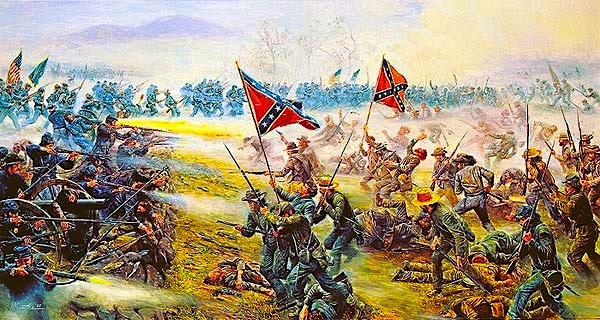
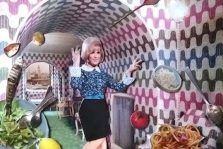
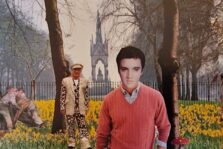
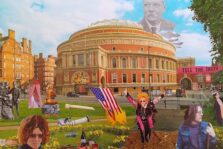
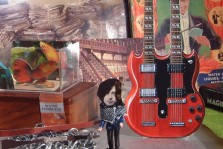

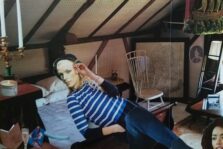
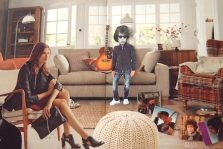

0 comments found
Comments for: FIGHTING SPIRITS